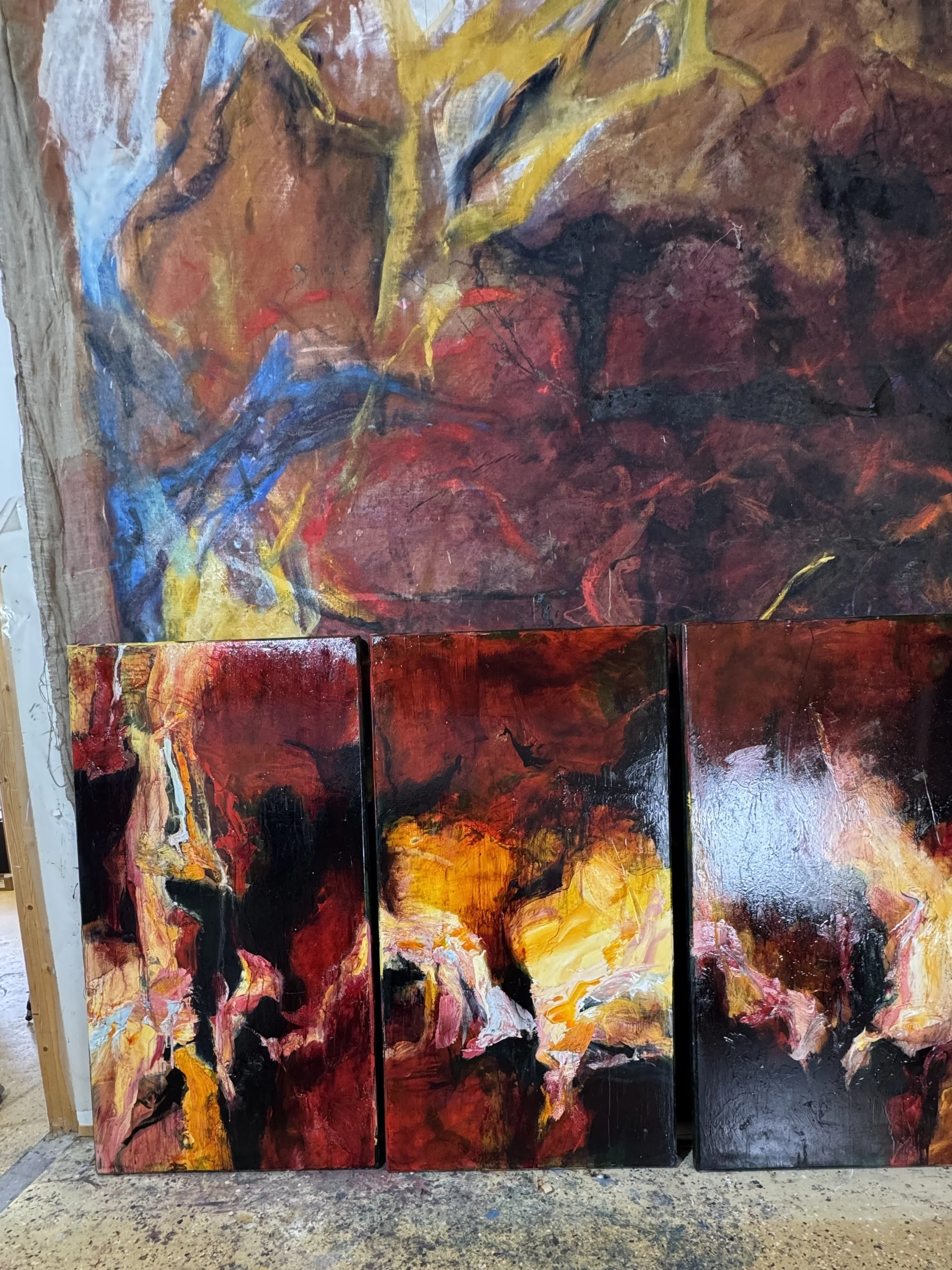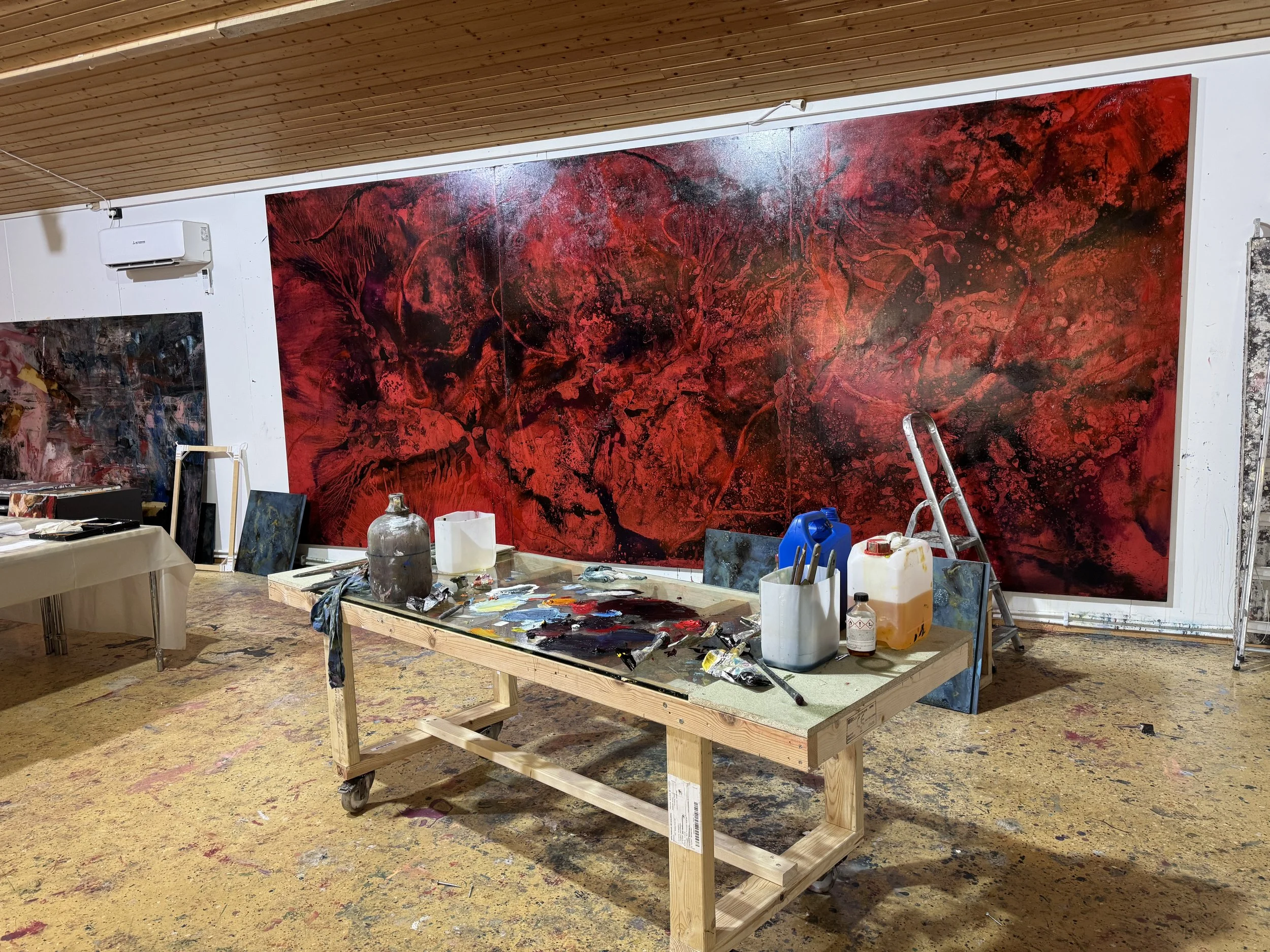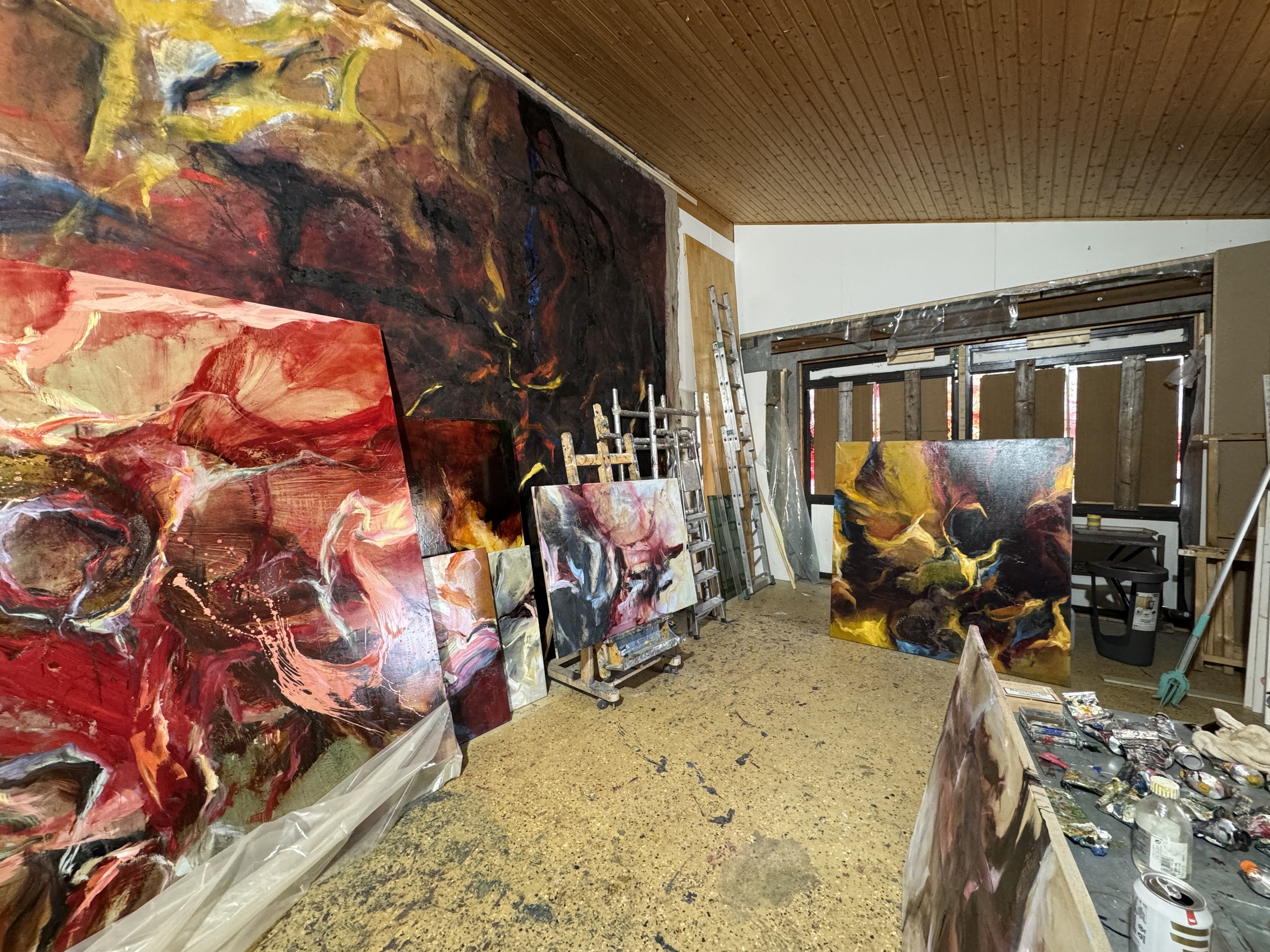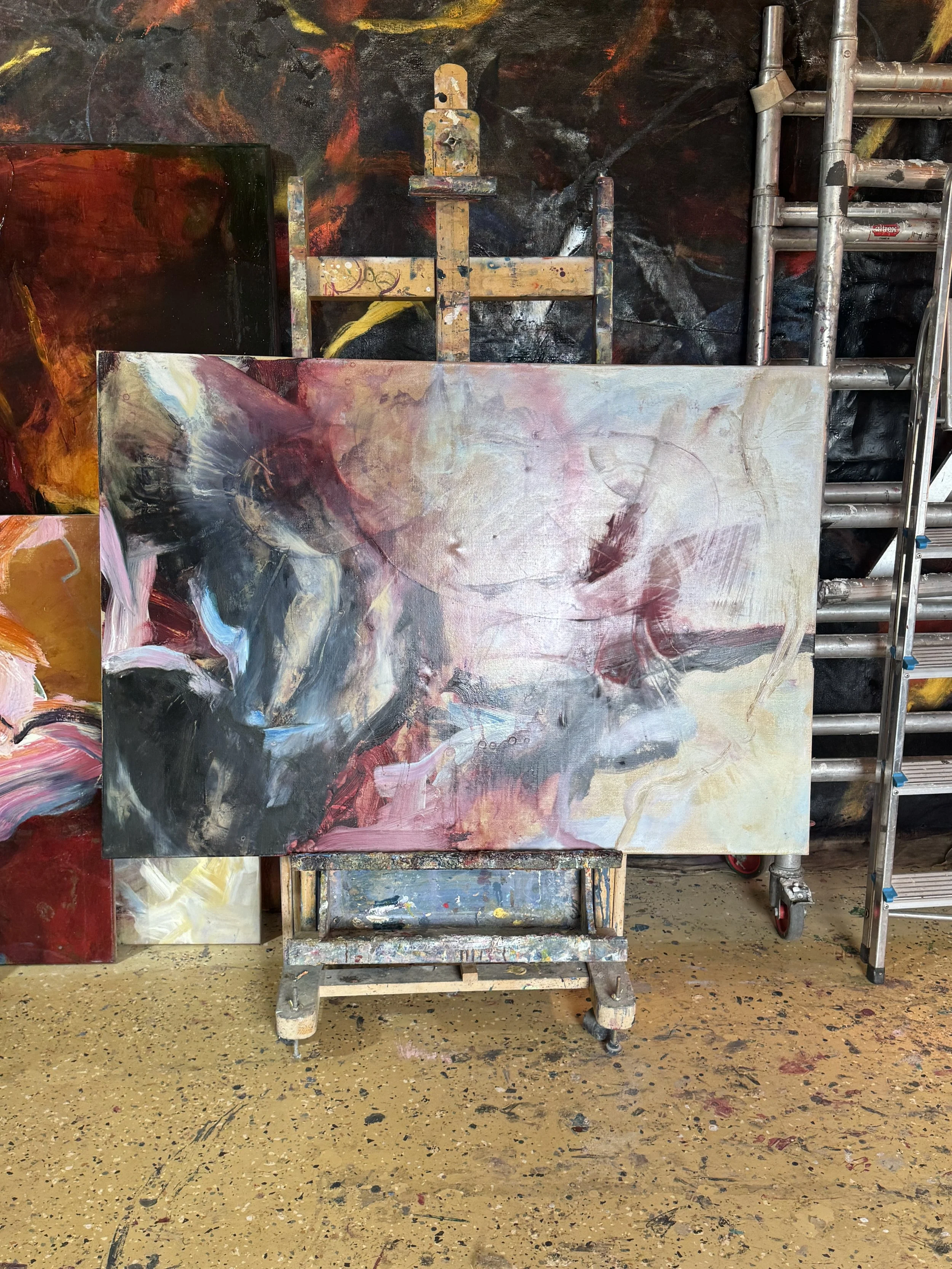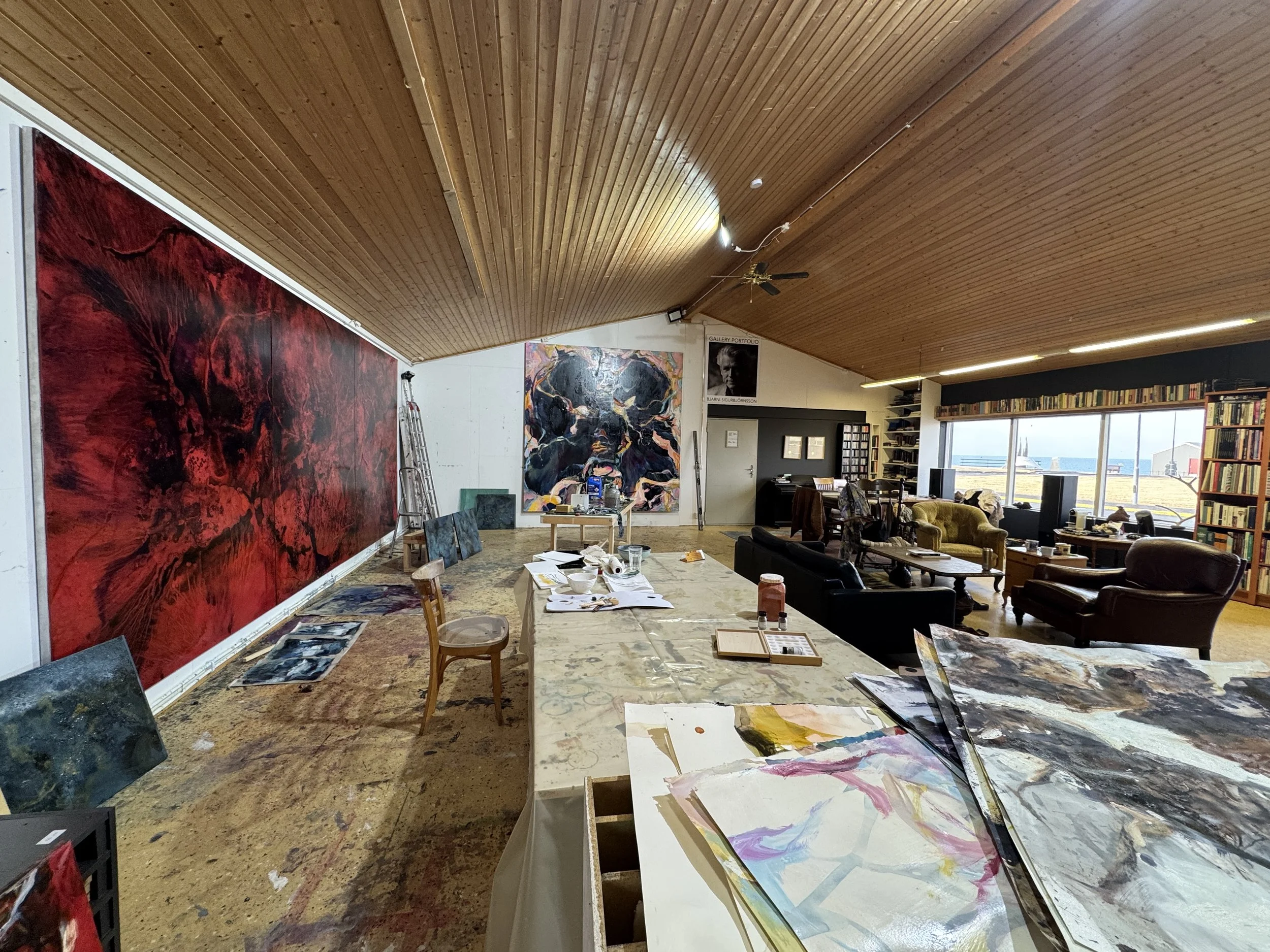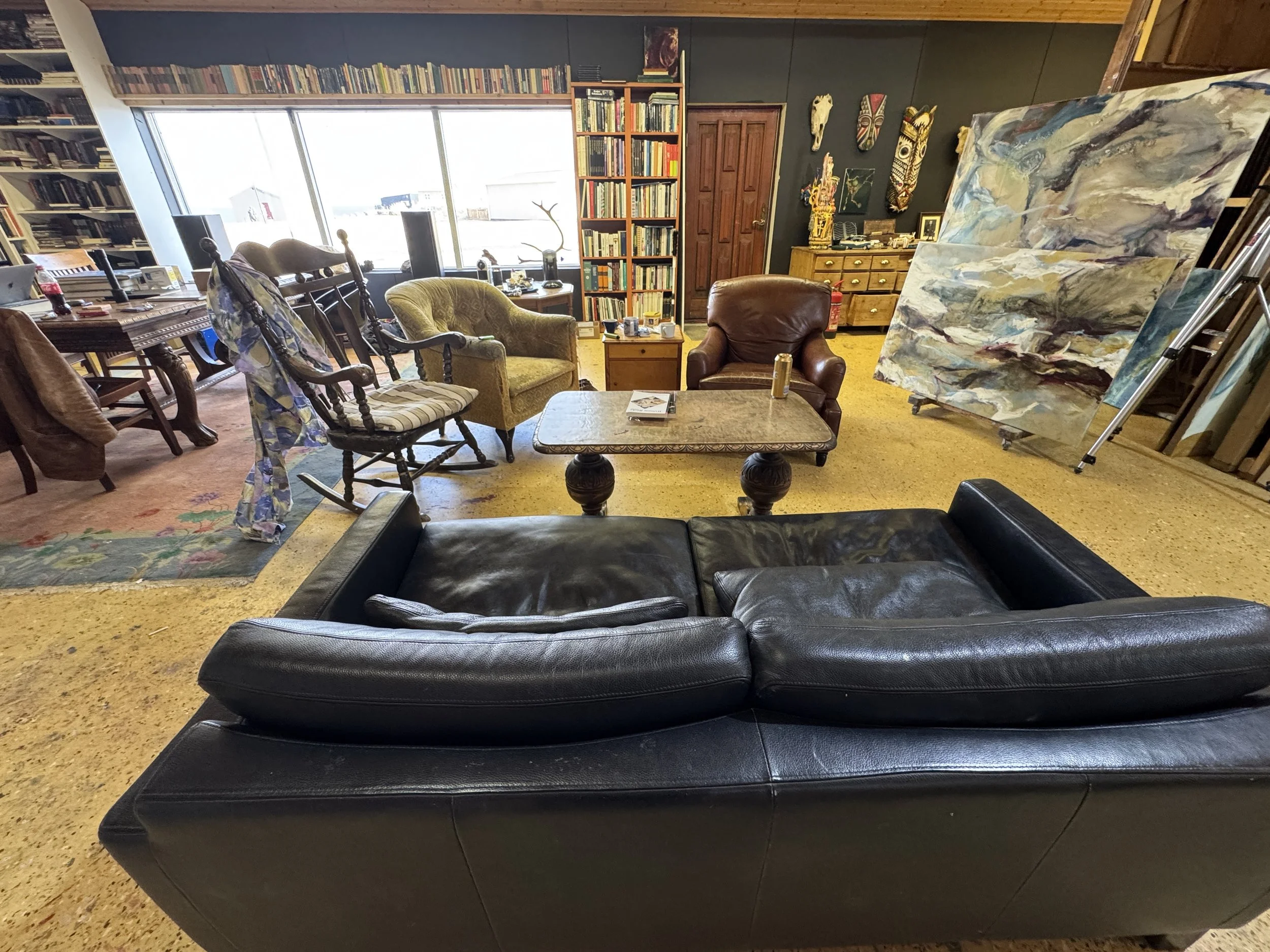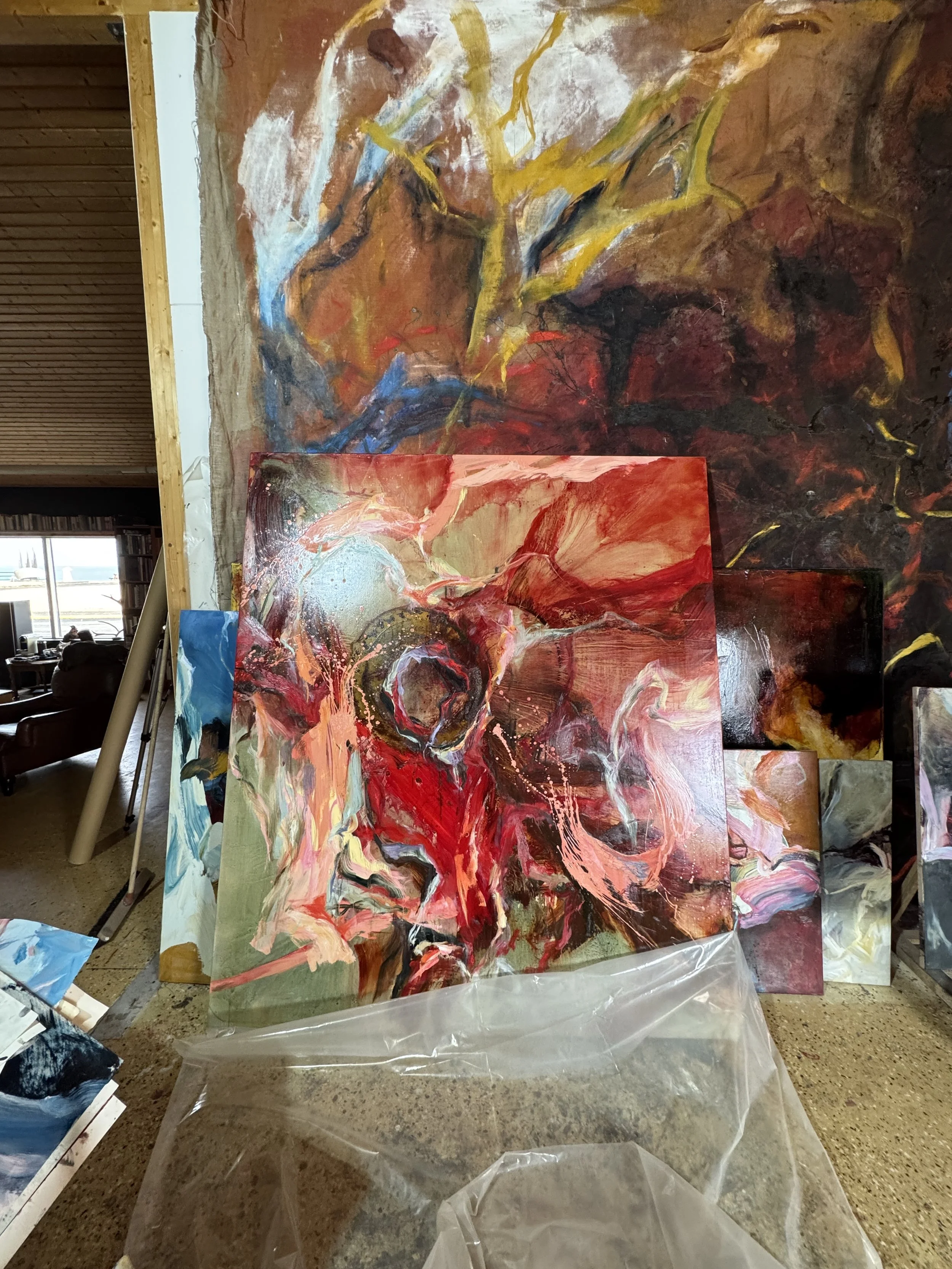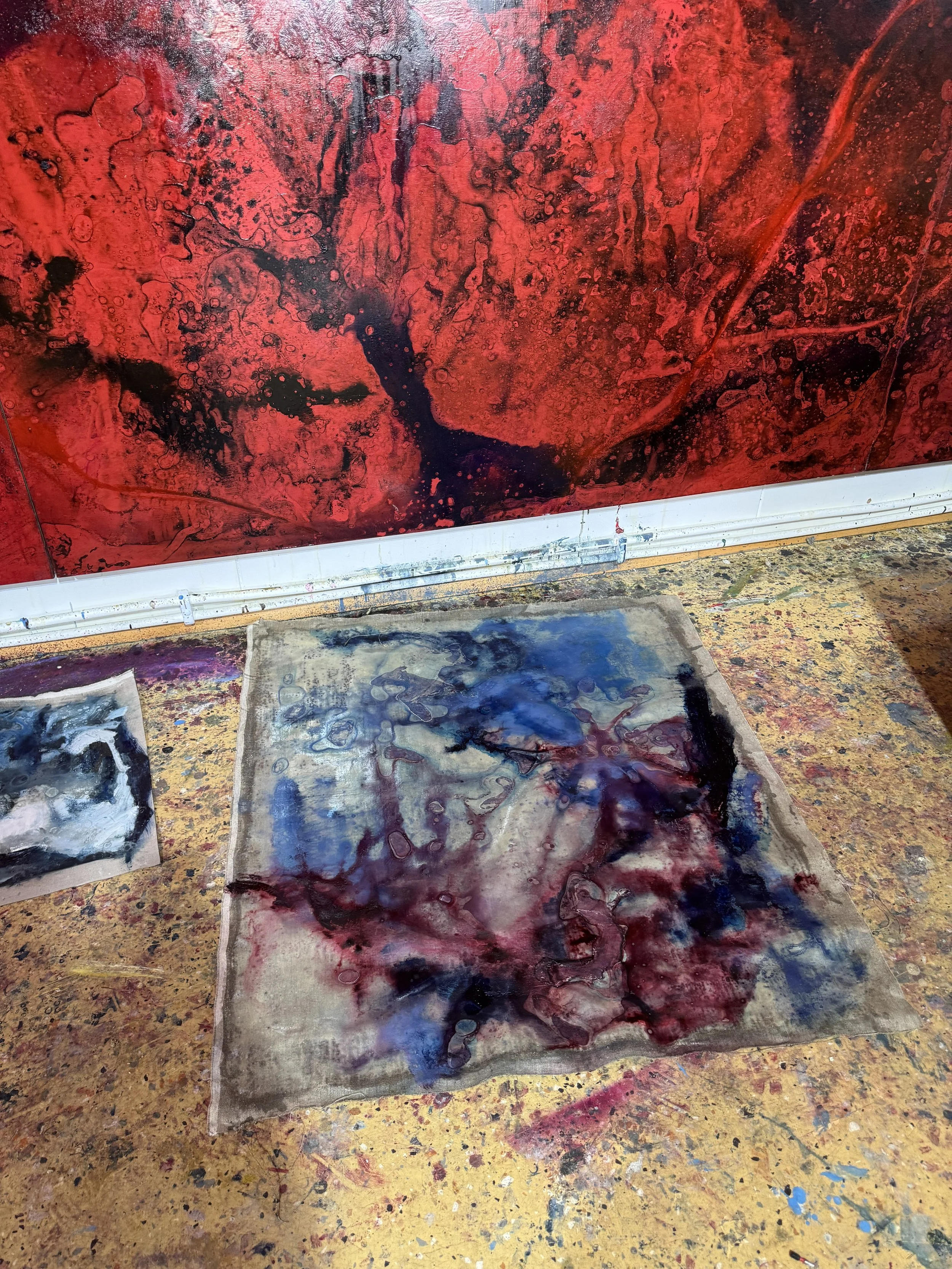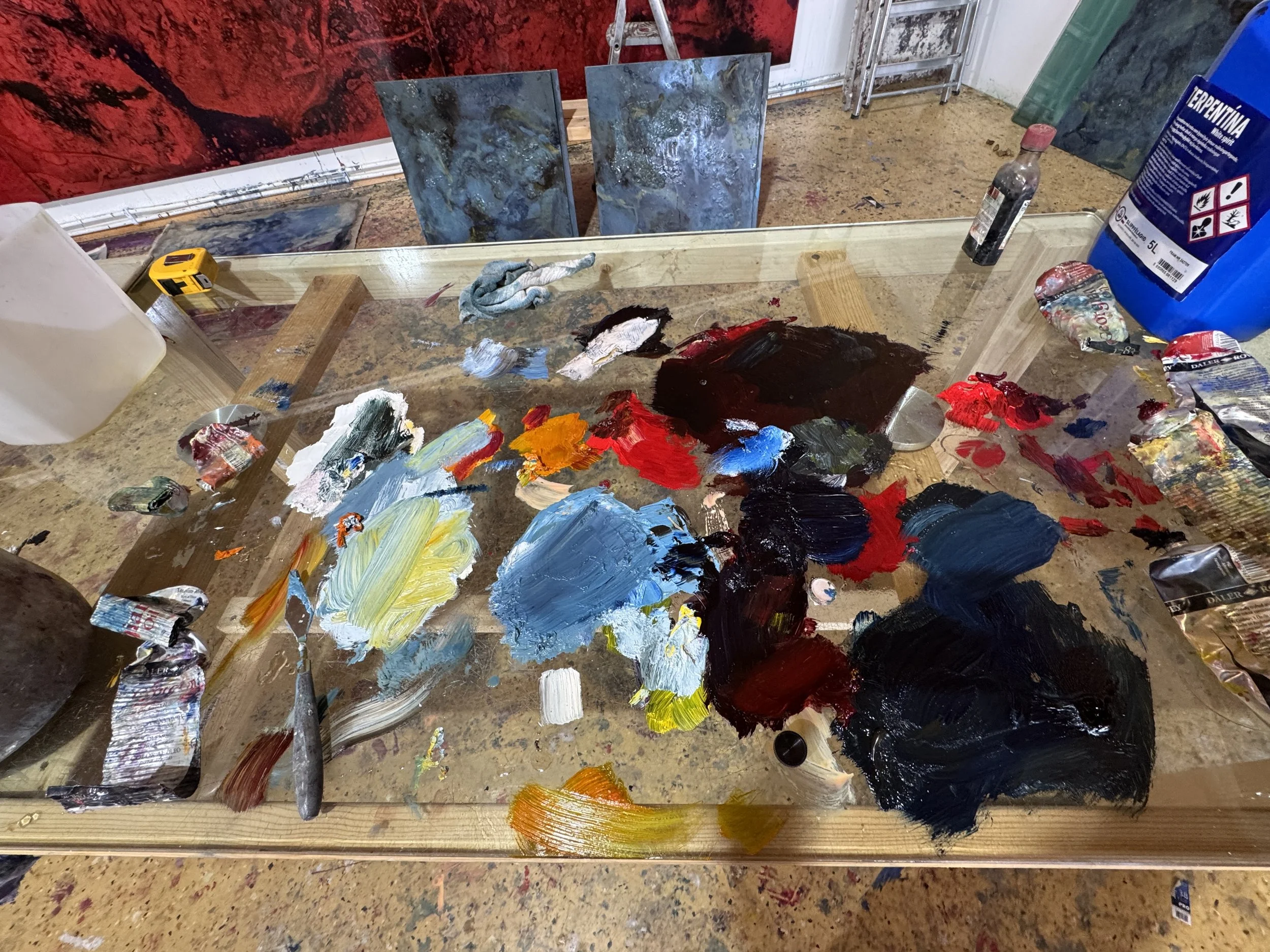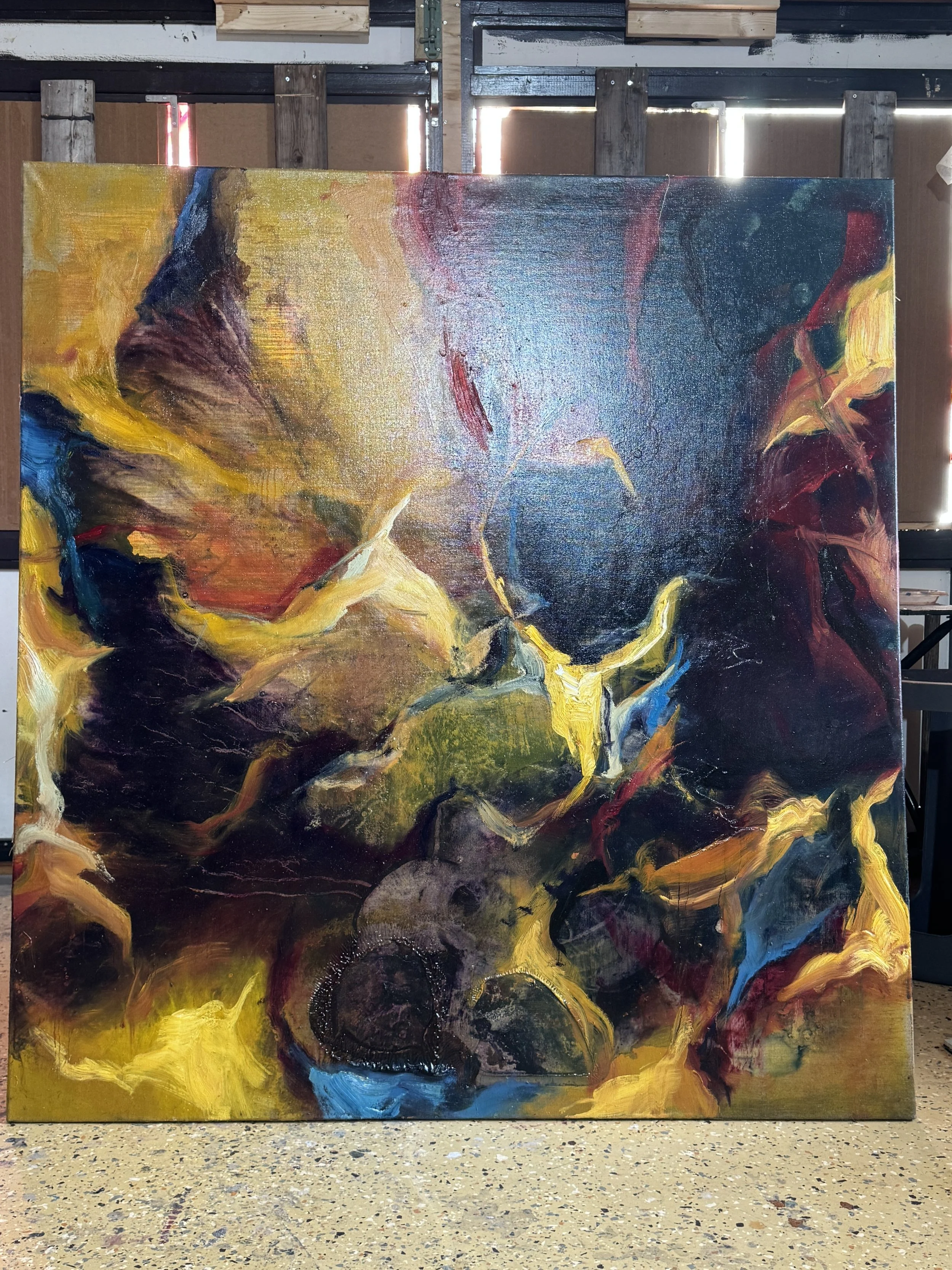Among the Elements: The Painting Practice of Bjarni Sigurbjörnsson
Bjarni Sigurbjörnsson’s paintings emerge from a profound attunement to the forces of time, space, and elemental presence. Educated at the San Francisco Art Institute and now living between land, lava, and sea in the remote Hellissandur region of western Iceland, Sigurbjörnsson occupies a landscape both visually austere and metaphysically charged. His studio lies just beneath a glacier, surrounded by ancient lava fields and facing the North Atlantic. Here, the environment is in constant motion—sculpted by glacial winds, sweeping rains, and cold fronts that arrive without warning. This volatility transforms his location into a kind of living threshold: a clearing of mutable energy, where matter and atmosphere are continually reshaping themselves. Known for its mystical associations, Hellissandur becomes not simply a backdrop, but a collaborator in the artist’s process—an active force in the formation of his sensibility and his paintings.
Sigurbjörnsson’s relationship to this terrain is not representational but phenomenological. He does not paint what he sees but channels the perceptual conditions of being with the land—its volatility, silence, and sudden force. Time, in this context, is not linear but cyclical and atmospheric, unfolding as weather, rhythm, and breath. His practice aligns with traditions of embodied abstraction, in which the artist’s gesture becomes a register of both interior and exterior forces.
He is compelled by sensory experience—by shifts in light, temperature, movement, and vibration—to arrest motion and respond through paint. His aim is not to capture form but to enter the threshold between sensation and cognition. These fleeting seconds—moments that hover between being and knowing—are where his paintings take shape. While his process may appear urgent, it is not forceful. He does not attack the canvas, but instead lets the body take over—allowing movement to arise organically, reflexively, as an extension of perception itself. In this way, his practice echoes the thinking of philosopher Maurice Merleau-Ponty, particularly in Eye and Mind, where the body is understood not as a passive tool but as an active medium of knowing.
His studio becomes a sound chamber—not only filled with the operas of Wagner, but attuned to his innermost thoughts, both conscious and unconscious. The music sets a tone of intensity and movement, mirroring the shifting conditions outside. Within this charged environment, painting becomes a form of listening as much as acting—a way of registering inner and outer currents alike. His works are shaped by contrast and motion: fire and ice, density and openness, tension and release. Rather than aiming for resolution, they remain in flux—evolving fields of energy where presence is continuously negotiated.
Sigurbjörnsson is fundamentally an abstract painter, drawn to the tactile language of material itself. He works with thick and thin layers of paint, allowing texture to convey meaning and sensation. He embraces the tension between mediums—encouraging oil, pigment, and surface to resist or cohere—establishing frictions that mirror psychic and environmental pressures. His compositions engage in a constant negotiation between presence and absence, between the fluidity of gesture and the formality of space. Influenced both by the structural clarity of the Old Masters and the immediacy of postwar action painting, Sigurbjörnsson has forged a visual language entirely his own. His paintings are a territory of excavation and encounter, where gesture becomes a tool for self-reflection and self-discovery. His Mind-Fields series exemplifies this approach—paintings that serve as perceptual fields charged with memory, vibration, and psychic resonance.
At this point in his career, Bjarni Sigurbjörnsson stands as an important and singular figure in the history of Icelandic art. His contribution lies not only in his visual vocabulary, but in the way he bridges philosophical inquiry and painterly intuition. Deeply influenced by the writings of Gilles Deleuze, and Maurice Merleau-Ponty, his work exists in dialogue with continental philosophy while remaining rooted in place and material. For Sigurbjörnsson, the mind is not separate from the hand, and thought is not abstracted from motion. The philosophical text informs the body, just as the body informs the brushstroke. When the hand thrusts forward, loaded with paint, it does so not as an act of dominance but as a gesture of becoming—setting forth onto a frontier of his own making.
Drawing from daily readings, sensory immersion, and a landscape in constant transformation, Sigurbjörnsson cultivates a practice that is both contemplative and raw. His lines emerge from stillness but carry velocity; his movements feel instinctive yet are grounded in reflection. Color arrives as frequency—vibrational, sensate, and spatially activated. It does not fill the surface; it charges it. Nothing is decorative. Everything is necessary.
Importantly, Sigurbjörnsson does not position himself outside the natural world. He does not seek control or detachment but rather moves with the elements. His work is not a record of place but a dialogue with it—an ongoing negotiation between material, body, and environment. The canvas becomes a field of resonance, where gesture maps energy, and energy maps time. He does not paint about the land—he paints through it.
They speak not of a fixed identity, but of a body moving through sensation, attuned to the elemental field in which painting, time, and thought coalesce.
- Victoria Chapman
Los Angeles, June 9, 2025
